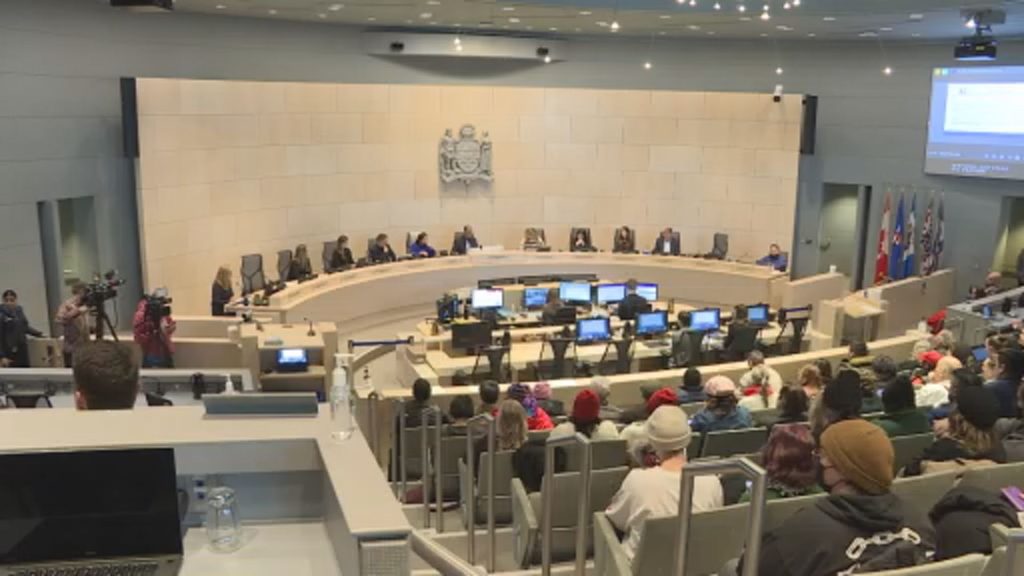Fears of conspiracy theories overshadowing legitimate district plan concerns

Posted May 31, 2024 4:45 pm.
The topic of urban planning and how Edmonton will grow to a population of 2 million, heated up at City Hall this week.
While council heard from those for, against, and in-between on the proposed district plans — one form urban planner says she fears legitimate concerns are getting drowned out by conspiracy theorists.
Despite council’s countless assurances there is no plan to limit people’s movements in the district plan, but rather give more options so all Edmontonians can access essential services in a 15-minute walk, bike, or transit ride — debunked conspiracy theories have dominated public discussions.
“People emailed me last night and said, ‘wow, it was really interesting to watch some of the councillors give more polite responses and consideration to the people who had the conspiracy theories than they did to you,” said Debby Kronewitt-Martin, Edmontonian former urban planner.
Kronewitt-Martin says she has over 30-year career as an urban planner with the City of Edmonton and is hoping councilors took note of concerns like hers.
“This district planning has not connected all the dots between the costs, we need a thorough costs assesment. I have a real problem with the city plan, the minimal consultation with the city plan,” said Kronewitt-Martin.
Pointing to a lack of clarity over specifics on heights for buildings, urban densification, and the impact it will have on infrastructure, and what she feels is a lack of consultation from Edmontonians.
“There was apparently something put in the mail along with the zoning bylaw notice in the tax notices two, three years ago. But we have a lot of people who are permanent renters, and they should have a say in the community too.”
But where do these fears of 15-minute city lockdowns come from — urban planning professor with the University of Alberta Sandeep Agrawal says the origins of that conspiracy trace back to London, but he says it’s not a new one.
“The origins could go back to early 19th century, more recently it could go back to your example of London in the U.K., where certain restrictions were placed for cars to enter into the downtown area of London. It was basically because there were too many cars coming, it required too much parking. It wasn’t a sustainable way for the City of London to function,” explained Agrawal.
Council will hear more from the public on district planning next week, and there is a motion yet to be voted on, that would see the plan sent back for more clarity.








